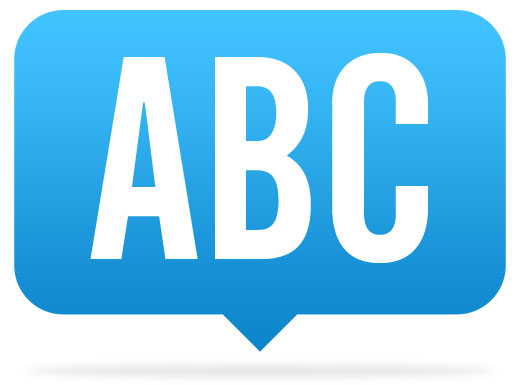Danish is the official language of Denmark, and it’s also a language spoken by smaller communities in countries mainly in Germany and Greenland. It is one of the North Germanic languages, also called Scandinavian languages, spoken in the north of Europe, and, like the others, it uses the Latin alphabet. This makes Danish an easy language to read, things get interesting when we try to actually pronounce those words.
This lesson is part of the chapter “Learning Danish“.

With a quite astonishing number of up to 30 vowel sounds and variations on consonant pronunciation as well, Danish can be quite a challenging language to learn. But that also makes it an adventure – this is the language to learn if you are curious about learning new sounds or if you want to study phonology.
The Danish Alphabet
| Letter (lower case) | Letter (upper case) | Name pronunciation | English transcription (lower case) | English transcription (upper case) | Example in Danish |
|---|---|---|---|---|---|
| a | A | a | a | A | samme (same) |
| b | B | b | b | B | bede (ask) |
| c | C | c | c | C | cykel (cycle) |
| d | D | d | d | D | dag (day) |
| e | E | ee | e | E | se (see) |
| f | F | f | f | F | fin (fine) |
| g | G | gee | g | G | gå (go) |
| h | H | ho | h | H | hus (house) |
| i | I | ee | i | I | dit (your) |
| j | J | jod | j | J | jord (earth) |
| k | K | ko | k | K | komme (come) |
| l | L | ell | l | L | le (laugh) |
| m | M | emm | m | M | mad (food) |
| n | N | enn | n | N | navn (name) |
| o | O | oo | o | O | ko (cow) |
| p | P | p | p | P | på (on) |
| q | Q | koo | q | Q | quiz (quiz) |
| r | R | r | r | R | rød (red) |
| s | S | s | s | S | vise (show) |
| t | T | t | t | T | tage (take) |
| u | U | oo | u | U | mus (mouse) |
| v | V | v | v | V | verden (world) |
| w | W | double v | w | W | watt (watt) |
| x | X | ex | x | X | xylofon (xylophone) |
| y | Y | /yː/ (see pronunciation) | y | Y | ny (new) |
| z | Z | zed | z | Z | zebra (zebra) |
Special Characters
| Letter (lower case) | Letter (upper case) | Name pronunciation | English transcription (lower case) | English transcription (upper case) | Example in Danish |
|---|---|---|---|---|---|
| æ | Æ | eh | knæ (knee) | ||
| ø | Ø | like the y | øl (beer) | ||
| å | Å | oh | hånd (hand) |
The sounds of Danish
The vowel system of the Danish language has been a challenge to study for many linguists, there are several studies and approaches and yet these sources do not fully agree with one another on which are the exact sounds and how to use the IPA symbols. All in all, there are up to 30 vowel sounds, a bit less for some authors, but it’s still important to note that there are not many languages with millions of speakers that have this many vowels. For Hans Basbøll, one of the linguists that has studied this system most extensively, Danish has 16 full different vowels that can change while speaking. Some consonants can make a vowel sound, like the r, which changes how the vowels that follow or precede it sound as well, let’s see how it works according to Basbøll.
Pronunciation
| Letter | Pronunciation (English example) | Phonetic notation |
|---|---|---|
| a | bad | [a], [aː], [ɑ], [ɑː], [æ], [æː] |
| b | bed | voiceless [b̥]; sometimes [b] |
| c | cat | [s] before e, i, y, æ and ø; otherwise [k] |
| d | dog | voiceless [d̥]; [ð] at the end of the syllable, this is hard to pronounce for English speakers, it’s like a d close to an l, requieres practice to get right. Try to do an l sound with the tip of the tongue touching the lower teeth. |
| e | dress | [e], [eː], [ɛ], [ɛː], [ə], [i] |
| f | find | [f] |
| g | go | voiceless [ɡ̊]; it becomes [ɪ̯] after vowels like e, o and u (front vowels) and [ʊ̯] after vowels like a or o (back vowels). |
| h | house | [h], not pronounced before v or j |
| i | bee | [i], [iː], [e] |
| j | yes | [j]; [ɕ] after s or t |
| k | kind | [k] |
| l | lie | [l] |
| m | morning | [m] |
| n | name | [ŋ] before g or k; otherwise [n] |
| o | boss | [o], [oː] |
| p | put | aspirated [pʰ]; voiceless [b̥] at the end of the syllable |
| q | quick | [kv] |
| r | No equivalent in English, the sound is made with the back of the tongue with a little friction. | guttural [ʁ]; pronounced like a [ɐ̯] vowel at the end of the syllable |
| s | send | [s] |
| t | take | aspirated [tˢ]; voiceless [d̥] at the end of the syllable |
| u | you | [u], [uː], [o] |
| v | very | [ʋ]; pronounced like a [ʊ̯] vowel at the end of the syllable |
| w | violin | [ʋ] |
| x | exact | [s] at the beginning, otherwise [ks] |
| y | No equivalent in English; this sound is made by pursing the lips and pronouncing an o | [y], [yː] |
| z | send | [s] |
Special Characters
| Letter | Pronunciation (English example) | Phonetic notation |
|---|---|---|
| æ | air | [æ], [æː], [ɛ], [ɛː] |
| ø | No equivalent in English; this sound is made by pursing the lips and pronouncing an e, has a bit of an o sound | [ø], [øː], [œ], [œː] |
| å | offer | [ɔ], [ɔː] |
The “r-colouring”
R-colouring brings vowels closer to the sound which resembles the vowel /ɑ/, the r can be absorbed by a vowel as well. These are the main changes:
| Before r | After r | Before and after r |
|---|---|---|
| [œː] > [ɶː] | [e] > [ɛ] | [a] > [ɑ] |
| [ɔ] > [ɒ] | [ø] > [œ] | [ɛ] > [æ] |
| [ɛː] > [æː] | [u] > [o] | [œ] > [ɶ] |
| [ʌ] > [ɒ] | [ə] > [ɐ] |
The stød
The stød is part of standard Danish even though it’s not used in some dialects. It’s usually translated as “glottal stop” because that’s one of its realizations, the other one is a creaky voice sound. To make this sound, you have to start pronouncing the word and then suddenly closing the vocal cords or just narrowing them, this results in a very brief pause. After that, the air is allowed to go through again creating the sound we are looking for.
Vowel combinations
| air | like the English i |
| au | like ow |
| eu | like eh-oo, but a bit closed |
| iu | like ew |
| ou, åu | like the o in offer |
| yu | like the u in huge |
| æu | like eh-oo |
| øi | like eh-oo but with the lips rounded |
Consonant combinations
Consonants can change their pronunciation depending on the word, sometimes they morph into vowels and they can even be omitted. For example, p could sound exactly like b, t like d and k like g. The way to go around this difficulty, just like with the vowels, is practicing a lot and listening to as much Danish as possible.
| ch | sounds like sh |
| sp | sounds like sb |
| st | sounds like sd |
| sk | sounds like sg |

Download your free language learning guide
Our free 18-page PDF ebook will teach you how to:
- Get (and stay) motivated learning a new language
- Achieve 80% of your goals with only 20% of the effort
- Make your learning experience more fun than ever
More Danish lessons
- Numbers in Danish
- Basic Conversation in Danish
- Greeting & Farewell in Danish
- Basic Danish Verbs
- Basic Danish Nouns
- Basic Danish Adjectives
- Colors & Appearance in Danish
- Countries & Languages in Danish
- Date & Time in Danish
- Holidays & Good wishes in Danish
- Food & Drinks in Danish
- People & Professions in Danish
- Family & Friends in Danish
- Body & Health in Danish
- Cities & Traffic in Danish
- Travelling & Leisure time in Danish
- Danish videos
- Vocabulary Trainer: Danish
- Main page: Learn Danish
Leave A Comment